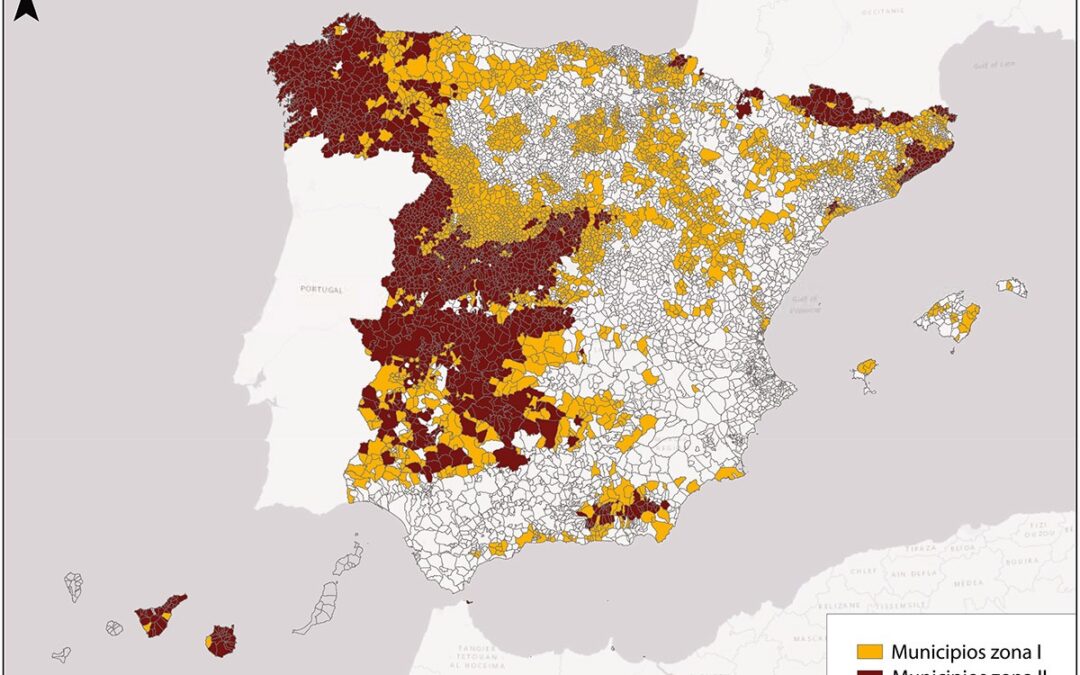Radon gas, the silent killer, is lurking in thousands of Spanish homes, schools, and workplaces. Invisible, odourless, and tasteless, this radioactive gas seeps up from the ground and accumulates indoors, often without any warning signs. In Spain, radon is now the second leading cause of lung cancer, responsible for more deaths than asbestos and causing over 1,500 deaths every year. Shockingly, one in five Spanish workplaces, including schools and libraries, have radon levels above the official danger threshold. In some regions like Asturias and Galicia, large parts of the territory are affected by dangerously high concentrations.
Even if you’ve never smoked, living in a home with elevated radon can double your risk of lung cancer. Some towns in Spain have recorded radon levels above 2,000 Bq/m³ twenty times higher than the World Health Organisation’s recommended safety limit. There is no safe level of radon exposure, and its deadly effects can take years to appear, silently damaging lungs with every breath. Due to the nature of our work, we have to actively monitor. The results are shocking.
Radon Gas in Old Houses: What You Need to Know
Radon gas is a colourless, odourless, radioactive gas that poses a significant health risk, particularly in older homes. Understanding why old houses are often more susceptible to radon and how to address the issue is essential for homeowners and buyers alike.
What Is Radon and How Does It Enter Homes?
Radon is produced by the natural decay of uranium found in nearly all soils and rocks. As uranium breaks down, radon gas is released and can move up through the ground into buildings. The primary entry points are:
- Cracks in the foundation or floors
- Gaps around pipes
- Openings in walls or crawl spaces
- Sometimes, through well water or certain building materials (though this is less common)
Once inside, radon can accumulate to dangerous levels, particularly in lower areas like basements.
Why Are Old Houses at Greater Risk?
While any home, new or old, can have high radon levels, older homes tend to be at higher risk due to several factors:
- Foundation Integrity: Over time, foundations in older homes may develop more cracks or gaps, providing easier pathways for radon to enter.
- Building Materials and Techniques: Older homes were not built with radon-resistant materials or modern construction techniques. Materials like stone or brick can also emit small amounts of radon.
- Poor Ventilation: Older homes often have less efficient ventilation systems, allowing radon to accumulate rather than dissipate.
- Unique Features: Features common in older homes, such as dirt crawlspaces, sump pumps, or outdated drainage systems, can increase the risk of radon infiltration.
Health Risks of Radon Exposure
Radon is the second-leading cause of lung cancer after smoking. Long-term exposure to elevated radon levels can damage lung tissue and significantly increase cancer risk. The risk is present regardless of whether a home is drafty or well-sealed, or whether it has a basement or not.
Testing for Radon in Old Houses
Testing is the only way to determine if a home has elevated radon levels. There are no visual cues, odours, or sounds to warn occupants. Testing is straightforward and can be done with:
- Short-term or long-term test kits are placed in the lowest lived-in area of the home
- Professional radon testing services, which may offer more accurate and comprehensive results
Health agencies recommend testing all homes, regardless of age, but it is especially important in older houses.
Mitigation Strategies for Older Homes
Radon mitigation in older homes can be challenging due to structural quirks, but several effective solutions exist:
| Foundation Type | Typical Mitigation Approach |
| Slab Foundations | Sub-slab depressurisation: A pipe and fan system draws radon from beneath the slab. |
| Concrete Basements | Sub-slab depressurisation plus sealing cracks and openings. |
| Drain Tile Foundations | Use of existing sump pits with active suction systems. |
| Crawl Spaces | Vapour barrier over soil and sub-membrane depressurisation system. |
Other general strategies include:
- Sealing foundation gaps and cracks
- Improving ventilation, especially in lower levels
- Installing radon mitigation fans or systems
- Radon-proof vapour barriers within the floor, and avoid raised wooden floors in high-risk areas
Professional assessment is recommended to choose the best mitigation method for a specific home’s structure and condition.
Key Takeaways
- Old houses are often at greater risk for high radon levels due to aging foundations, outdated building materials, and poor ventilation.
- Radon exposure is a serious health risk, and testing is the only way to know your home’s radon level.
- Effective mitigation is possible, even in older homes, with professional assessment and tailored solutions.
- All homeowners—regardless of their home’s age—should test for radon and take action if levels are elevated.
Regular testing and prompt mitigation can ensure a safer living environment in any home, old or new.

